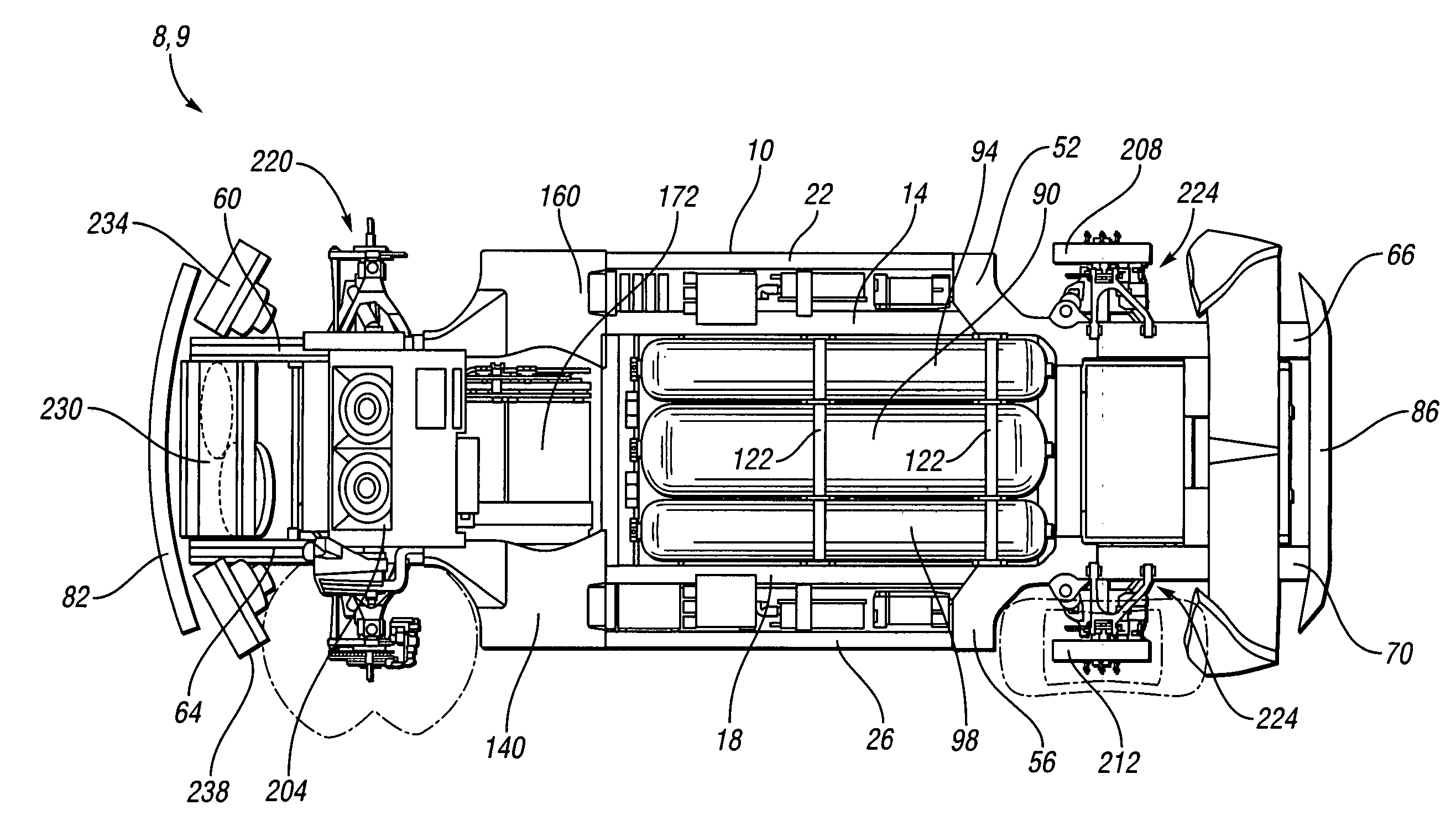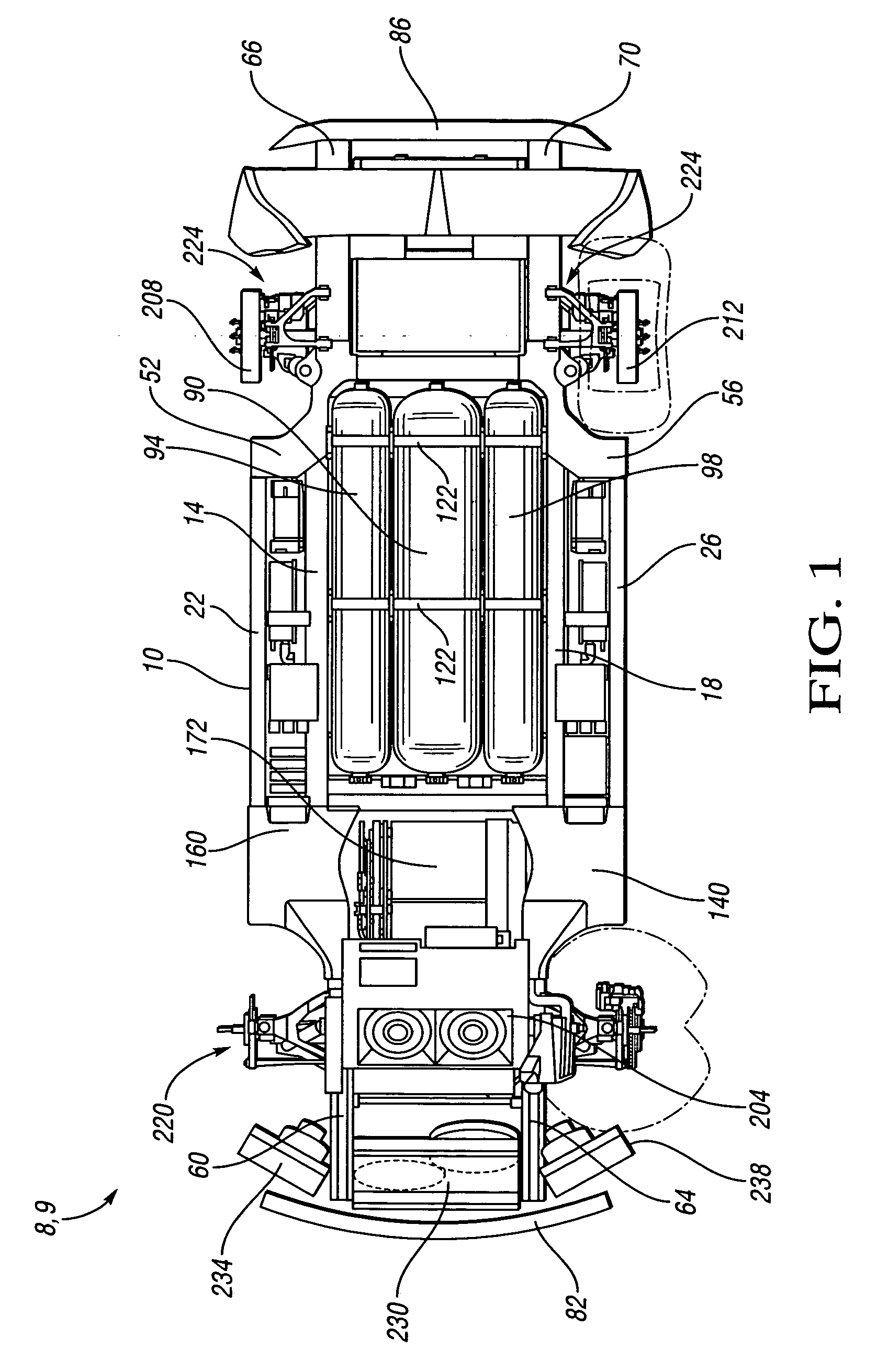Fuel cell vehicle architecture
a fuel cell and vehicle technology, applied in the direction of electrochemical generators, electric propulsion mounting, transportation items, etc., can solve the problems of limited packing space between the rear wheels, limit the vehicle travel range between refuelings, etc., to achieve the effect of increasing the fuel cell stack size, and reducing the size of the fuel tank
- Summary
- Abstract
- Description
- Claims
- Application Information
AI Technical Summary
Benefits of technology
Problems solved by technology
Method used
Image
Examples
Embodiment Construction
[0015] Referring to FIG. 1, a chassis 8 for a vehicle 9 is schematically depicted. The chassis includes a structural frame 10. Referring to FIGS. 2 and 3, the frame includes a first rail 14 and a second rail 18 cooperating to at least partially define a protected cavity 20 therebetween. A third rail 22 is outboard of the first rail 14 and cooperates with the first rail 14 to at least partially define a first lateral cavity 24 outboard of the protected cavity 20. A fourth rail 26 is outboard of the second rail 18 and cooperates with the second rail 18 to at least partially define a second lateral cavity 28 outboard of the protected cavity 20. Various chassis components are shown inside the lateral cavities 24, 28. Cross member 32 rigidly interconnects the first and second rails 14, 18. Cross member 36 rigidly interconnects the first and third rails 14, 22. Cross member 40 rigidly interconnects the second and fourth rails 18, 26.
[0016] The frame 10 also includes a first node 44, a se...
PUM
 Login to View More
Login to View More Abstract
Description
Claims
Application Information
 Login to View More
Login to View More - R&D
- Intellectual Property
- Life Sciences
- Materials
- Tech Scout
- Unparalleled Data Quality
- Higher Quality Content
- 60% Fewer Hallucinations
Browse by: Latest US Patents, China's latest patents, Technical Efficacy Thesaurus, Application Domain, Technology Topic, Popular Technical Reports.
© 2025 PatSnap. All rights reserved.Legal|Privacy policy|Modern Slavery Act Transparency Statement|Sitemap|About US| Contact US: help@patsnap.com



